Search
-
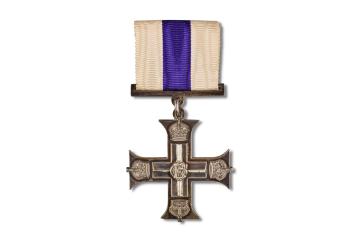 ©
NMAG
©
NMAG
Military Cross
First World War Military Cross awarded to Lieutenant OK Parker for gallentry during what is often called the blackest day in the Northamptonshire Regiment's history.
1915 Modern
-
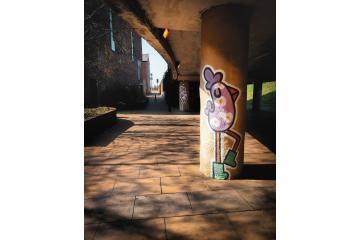 ©
NMAG
©
NMAG
Binty Chicken
A Binty Chicken, created by anoymous grafitti artist Binty Bint and just one part of Northamptonshire's story in the 21st century.
2025 Modern
-
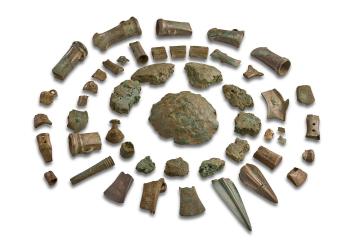 ©
NMAG
©
NMAG
Bronze Age Hoard
A collection of Bronze Age damaged or worn bronze objects including axe heads, sword framents and other bronze pieces found together buried in a hoard.
Bronze Age 3300 - 1200 BCE Geologic to Prehistoric
-
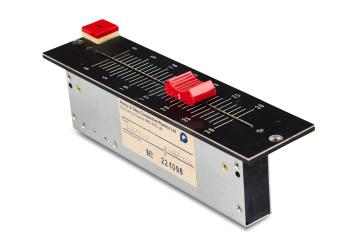 ©
NMAG
©
NMAG
BBC Radio Microphone Fader
Late 1980s microphone fader used in the BBC Radio Northampton Studios. It was replaced with the advent of digital broadcasting in the 21st century.
1980s Modern
-
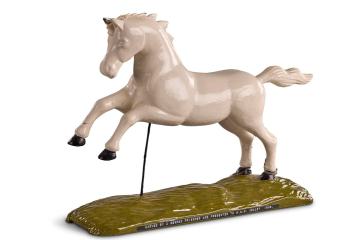 ©
NMAG
©
NMAG
Northamptonshire Yeomanry Horse Model
Carved and painted wooden model of a white horse, the regimental badge of Northamptonshire Yeomanry since 1794.
Georgian 1794 Stuart to Georgian
-
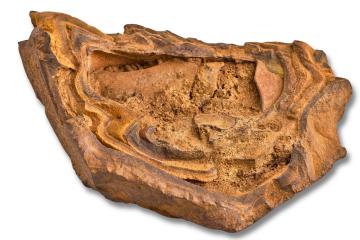 ©
NMAG
©
NMAG
Ironstone
Northamptonshire’s ironstone was formed from iron-rich sediments in the Jurassic period. Quarried since Roman times, ironstone has shaped our landscape, fuelled the county's industry and built our houses.
175 million years ago Geologic to Prehistoric
-
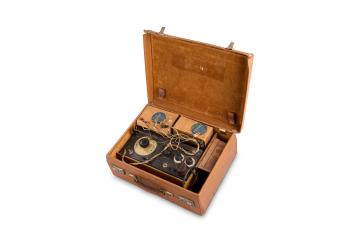 ©
NMAG
©
NMAG
Spy Radio
Spy radio belonging to Swedish national and Nazi Sympathiser Gösta Caroli, recovered when he was caught parachuting into Northamptonshire in 1940.
1940 Modern
-
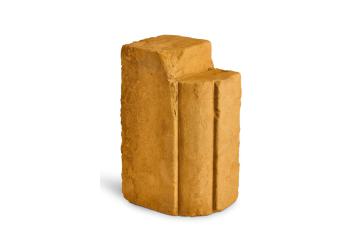 ©
NMAG
©
NMAG
Dressed Northamptonshire Sandstone
A small piece of sandstone quarried and dressed for use in the modern repairs to the 16th century Manor House in Great Doddington.
1999 Modern
-
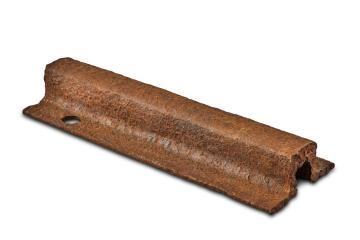 ©
NMAG
©
NMAG
Brunel Broad Gauge Bridge Rail
The railway came to Northamptonshire in the mid-1800s with the Broad Gauge track of Isambard Kingdom Brunel's Great Western Railway and a station at Aynho.
Victorian 1840s Modern
-
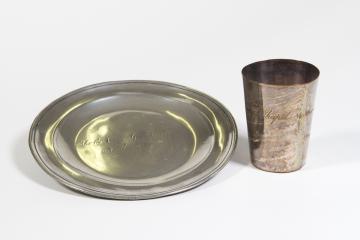 ©
NMAG
©
NMAG
Communion Plate and Cup from County Gaol
Pewter Communion plate and cup used for services in the chapel of Northamptonshire's County Gaol.
Georgian 1782 Stuart to Georgian
-
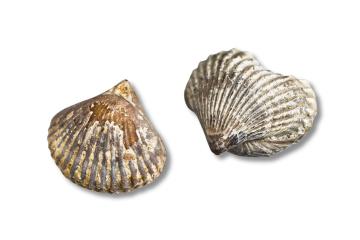 ©
NMAG
©
NMAG
Jurassic Fossil Kallirhynchia sharpi
168 million years ago, Northamptonshire lay beneath a warm sea teeming with marine life, including this fossil brachiopod Kallirhynchia sharpi.
168 million years ago Geologic to Prehistoric
-
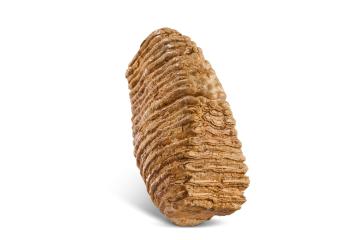 ©
NMAG
©
NMAG
Mammoth Tooth
This tooth belonged to a woolly mammoth that roamed Northamptonshire during the Great Ice Age as recently as 11,700 years ago.
Up to 11,700 years ago Geologic to Prehistoric
-
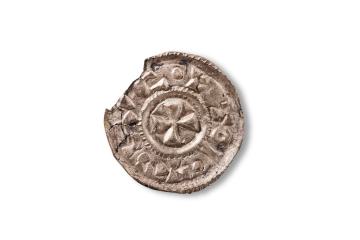 ©
NMAG
©
NMAG
Viking Silver Coin
There is limited evidence of Viking influence in Northamptonshire and despite being minted during Viking rule this silver coin from Northampton depicts an Anglo-Saxon king.
Anglo-Saxon 895 CE-915 CE Roman and Early Medieval
-
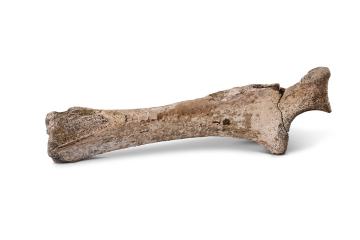 ©
NMAG
©
NMAG
Woolly Rhinoceros Bone
This ulna (leg bone) comes from a woolly rhinocerus that lived in Northamptonshire during the Pliocene and Pleistocene ice Age.
Between 50,000 and 12,000 years ago Geologic to Prehistoric
-
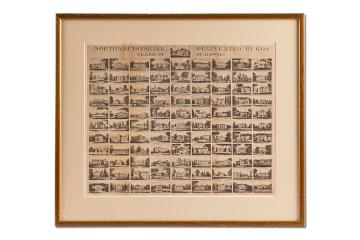 ©
NMAG
©
NMAG
Northampton Delineated - Print showing 100 Houses and Stately Homes
Print by George Clarke of Scaldwell showing 100 houses and stately homes of Northamptonshire - the county of squires and spires.
Victorian 1819 - 1854 Modern
